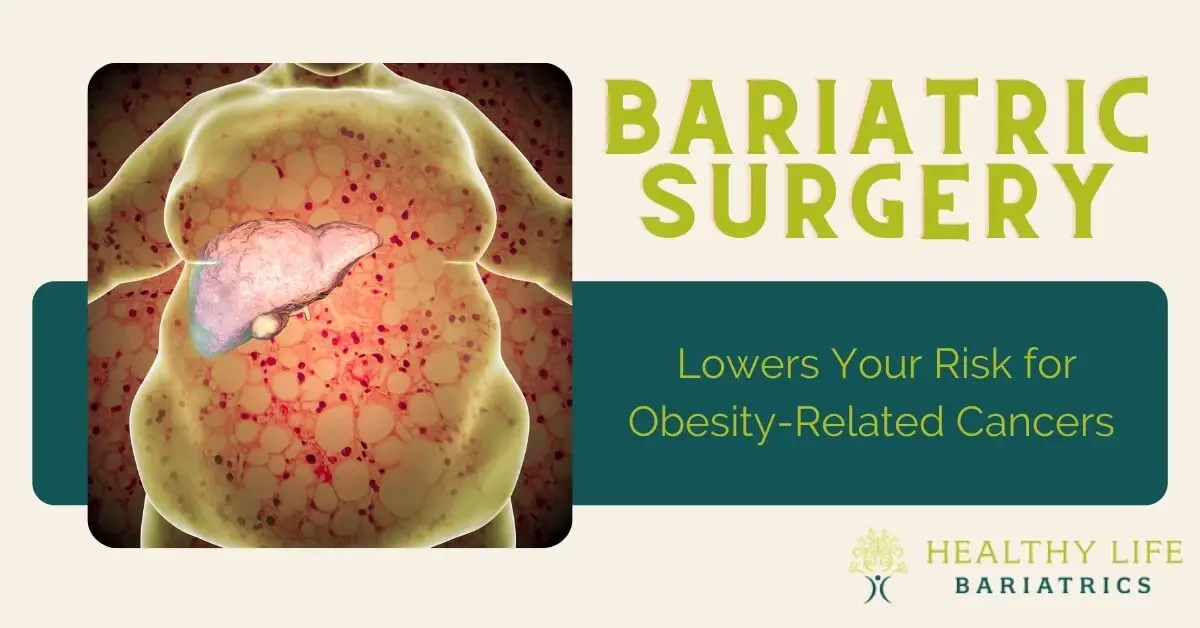
Understanding Bariatric Surgery Los Angeles, CA
Bariatric surgery, also known as weight loss surgery, involves various surgical procedures performed on people who are obese. The primary goal of performing bariatric surgery is to induce weight loss by modifying the gastrointestinal tract to restrict food intake and, in some cases, alter the normal digestive process.
Why Weight loss surgery is done?
Bariatric surgery is performed to help individuals with extreme obesity to lose weight. It's an option when diet and exercise haven't worked or when serious health issues are present due to obesity.
Who is a candidate for bariatric surgery?
Candidates for bariatric surgery typically include those with a Body Mass Index (BMI) of 40 or higher, or a BMI of 35 or higher with obesity-related health conditions such as type 2 diabetes, high blood pressure, or severe sleep apnea.

What are the risks of bariatric surgery?
Like any major procedure, bariatric surgery carries potential health risks, both in the short term and long term. Risks may include infections, blood clots, bleeding, and complications due to anesthesia and other health conditions.

How You Prepare for Weight loss surgery?
Preparation involves undergoing several lab tests, physical examinations, and evaluations from specialists. Patients may be required to start a physical activity program, stop smoking, and make dietary changes.
Types of Bariatric Surgery in Los Angeles

Bariatric surgeries are primarily categorized into two groups: restrictive and malabsorptive:
Restrictive procedures:
- Sleeve gastrectomy (Gastric Sleeve) Removes a portion of the stomach to create a smaller stomach and reduce food intake. Leads to weight loss through restriction but can cause nutritional deficiencies.
- Adjustable gastric band - Involves placing a band around the stomach to create a small pouch and narrow passageway to limit food intake. Advantages include adjustability and reversibility. Disadvantages include slower weight loss and complications like slippage.
Malabsorptive procedures:
- Biliopancreatic diversion with duodenal switch (BPD/DS) - Removes portion of stomach and bypasses section of small intestine to reduce absorption. Causes significant weight loss but higher risk of deficiencies.
- Single anastomosis duodeno-ileal bypass (SADI-S) - Combines sleeve gastrectomy with intestinal bypass. Limits food intake and absorption leading to weight loss. Risk of malnutrition requiring monitoring.
Gastric Sleeve in Los Angeles
Gastric Sleeve Procedure
A portion of the stomach is removed, leaving a narrow sleeve-shaped stomach.
How Gastric Sleeve Works
The smaller stomach limits food intake and decreases the production of hunger-regulating hormones.
Gastric Sleeve Surgery Pros and Cons
Includes significant weight loss, no bypass or re-routing of the food stream, and a reduced risk of ulcers.
It is irreversible and can lead to vitamin deficiencies.
Gastric Bypass or Roux-en-Y (RYGB)
Gastric Bypass Procedure
The stomach is divided into a small upper pouch and a larger lower remnant pouch and the small intestine is rearranged to connect to both.
How Gastric Bypass Works?
Reduces the amount of food that can be consumed and absorbed.
Advantages of Gastric Bypass
Results in significant long-term weight loss, improved conditions like diabetes, and reduced heart disease risk.
Disadvantages of Gastric Bypass
It can lead to "dumping syndrome," nutrient deficiencies, and is technically more complex.
Gastric Lap band
Gastric Band Surgery (LAP-Band) Procedure
A band is placed around the upper part of the stomach to create a small pouch to hold food.
How Gastric LAP-Band Surgery Works
It limits the amount of food the stomach can hold and increases the time it takes to digest food.
Advantages of Lap band surgery
Reversible and adjustable, it lowers the risk of vitamin and mineral deficiencies.
Disadvantages of Lap band surgery
Slower weight loss, regular follow-up visits for band adjustments, and possible band slippage or erosion.
Biliopancreatic Diversion with Duodenal Switch (BPD/DS)
The Procedure
A portion of the stomach is removed, and a large part of the small intestine is bypassed.
How It Works
Limits food intake and reduces calorie absorption.
Advantages
Results in greater weight loss, allows patients to eat larger meals than other procedures.
Disadvantages
Higher risk of vitamin and protein deficiencies and more complex surgery.
Single Anastomosis Duodeno-Ileal Bypass with Sleeve Gastrectomy (SADI-S)
The Procedure
Combines sleeve gastrectomy with intestinal bypass, where part of the intestine is bypassed.
How It Works
Reduces food intake and the amount of calories and nutrients absorbed.
Advantages
Significant weight loss and improvement in obesity-related conditions.
Disadvantages
Risk of malnutrition and requires lifelong nutritional monitoring.
Alternative Bariatric Surgery Los Angeles
Vertical Banded Gastroplasty
Involves stapling the stomach and creating a small pouch.
Implants and Devices
Intragastric Balloon
A balloon is placed in the stomach to occupy space and reduce food intake.
Implantable Gastric Stimulation
Electrical impulses are used to trick the stomach into feeling full sooner.
What You Can Expect after Weight loss surgery?
The surgery usually requires hospitalization. Post-surgery, patients will have limitations on eating and are required to adopt a specific diet for a certain period, starting with liquids and progressing to solid foods.

After Bariatric Surgery in Los Angeles
The recovery process includes regular follow-ups for nutritional counseling, behavior modification, and psychological support. Patients need to adhere to lifelong dietary changes, exercise regimens, and often, vitamin and mineral supplementation.
Results of Bariatric Surgery Los Angeles
The success of bariatric surgery is measured by total weight loss, improvement or resolution of obesity-related conditions, and improvements in quality of life.
Medical Benefits of Bariatric Surgery in Los Angeles
Weight Loss
Significant and sustained weight loss is a primary benefit.
Type 2 Diabetes Mellitus
Many patients experience remission of type 2 diabetes.
Reduced Mortality and Morbidity
Decreased risk of death and improved overall health.
Fertility and Pregnancy
Improvements in fertility and safer pregnancies for women with obesity.
Mental Health
Many patients report improved mood, self-esteem, and quality of life.
Bariatric Surgery Risks and Complications
Postoperative
Includes risks of surgery and immediate postoperative complications.
Gastrointestinal
Potential for leaks, acid reflux, and nausea.
Gallstones
Increased risk due to rapid weight loss.
Kidney Stones
Potential increase in risk due to changes in urine composition.
Pregnancy
Requires careful monitoring and management due to altered nutritional needs.
Mechanisms of Action for Bariatric Surgery
Hormone Regulation
Bariatric surgery impacts levels of gut hormones like GLP-1, peptide YY, and oxyntomodulin that promote satiety and suppress appetite. Restrictive procedures appear to elevate peptide YY the most, while gastric bypass has the greatest effect on GLP-1. These changes likely contribute to the decreased hunger and increased feeling of fullness reported by patients after surgery.
Restricting Food Intake
Procedures like gastric banding, vertical sleeve gastrectomy, and gastric plication work by physically reducing stomach capacity. This limits the amount of food the stomach can hold at one time, promoting earlier satiation during meals. The smaller gastric reservoir also leads to slower emptying and longer retention of food, contributing to appetite suppression.
Nutrient Absorption
By bypassing parts of the stomach and upper intestine, operations like gastric bypass and biliopancreatic diversion limit contact between nutrients in food and absorptive surfaces in the GI tract. This reduces overall calorie and nutrient absorption. The resulting nutrient deficiency might also influence body weight and metabolism through mechanisms that remain unclear.
Bariatric Surgery Recovery
Dietary Recommendations
A typical post-op diet starts with 1-2 weeks of liquid nutrition, then progresses to pureed foods for 2-4 weeks, ultimately returning to solid foods at around 4-6 weeks post-op. Lifelong dietary changes emphasizing high protein, low simple carb meals eaten slowly and mindfully support continued weight loss and management. Most programs require intensive dietary counseling before and after surgery.
Fertility and Family Planning
Pregnancy within 2 years of surgery can substantially increase maternal and fetal risks. Experts recommend delaying conception 18-24 months post-op when the most rapid weight loss has stabilized. However, those with pre-existing fertility issues often see dramatic improvement in conceiving ability in as little as 1 year post-op. Lifelong nutritional supplementation is vital for healthy pregnancy outcomes.
Post-operative Bariatric Plastic Surgery
Following major weight loss from bariatric procedures, excess sagging skin often affects areas like the breasts, arms, abdomen, buttocks and thighs. Secondary plastic surgery procedures such as abdominoplasty, breast lift/augmentation/reduction, lower body lifts and medial thigh lifts can remove loose skin for improved body contour and prevent conditions like intertrigo. Most plastic surgeons advise a 1-2 year period of weight stability before skin surgery.
Conclusion: Bariatric Surgery Los Angeles, CA

In summary, bariatric surgery is indicated in patients who have develop co-morbid illness secondary to their weight gain. Patients must be evaluated to determine the best possible bariatric surgical plan based on their BMI and weight loss goals. Please consider a consultation with Dr. Babak Moein to begin you personal journy.

